A bridge across the Irish Sea and four other amazing plans
- Published
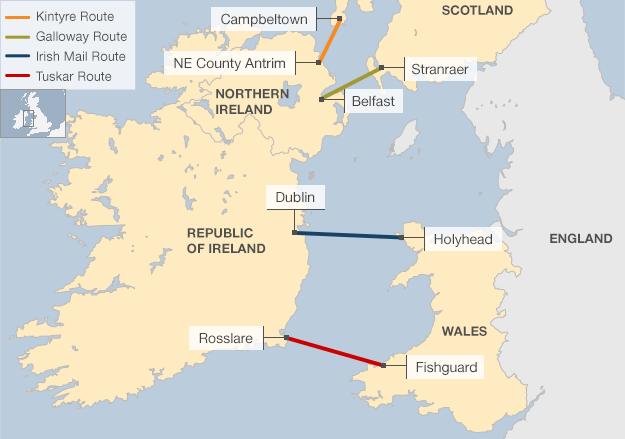
There are always new proposals for big-money infrastructure projects, but could these five really change life in Britain and Ireland?
On Tuesday, we discussed proposals for a new road Channel tunnel, a motorway for eastern Britain, a bridge to the Isle of Wight, billion-pound tram schemes and a tunnel at Welwyn North.
Here are five more projects that are either much desired or slices of blue sky thinking.
Ireland tunnel
A tunnel or bridge between Britain and Ireland has been discussed for decades. It would boost tourism and business activity on both sides of the Irish Sea, supporters argue. But what about the engineering?
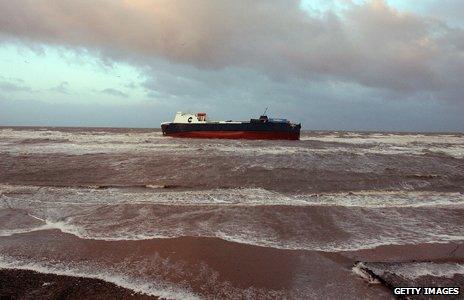
A tunnel could provide an alternative to crossing the often choppy Irish Sea
Bridges are normally cheaper. But a UK-Ireland bridge would have to be long. Donghai Bridge at 20.2 miles linking Shanghai and offshore Yangshan is sometimes called the longest sea bridge. In the most realistic locations, a bridge to Northern Ireland or the Republic would be even longer.
A 21-mile bridge from Galloway in Scotland to Northern Ireland, external was proposed in 2007. Think-tank the Centre for Cross Border Studies put forward the proposal to provide international rail links that could compete with air services.
The Chambers of Commerce of Ireland called in 2005 for a part tunnel, part bridge link to carry trains between Tuskar, County Wexford, in Ireland and Pembrokeshire in Wales. Three-quarters of Irish firms surveyed at the time said that a fixed link with Europe was vital.
The Irish Academy of Engineers has envisaged a 50-mile rail tunnel with a journey time from Dublin to Pembrokeshire, external of 70 minutes.
Four main routes have been proposed. Two run from Scotland to Northern Ireland - Campbeltown to County Antrim, or Stranraer to Belfast.
Two run from Wales to the Republic, a northern and southern route, where the Welsh peninsula juts into the Irish Sea.
Bill Grose, former chairman of the British Tunnelling Society, says there are two critical issues for siting the tunnel. First, the location that most supports transport demand, and how well served that location is by rail and road links. Second, the shortest distance across the sea.
Holyhead to Dublin is about 50 miles of water, Fishguard to Wexford is about 45 miles and Stranraer to Belfast is about 20 miles.
The Campbeltown to County Antrim route is only 12 miles but the town is in an isolated part of Scotland that would need transport links to be cut through mountainous terrain.
The most financially viable appear to be those from Wales to the Republic, Grose says. "Intuitively Holyhead to Dublin is a more preferable route than the others. It's closer to Manchester and Liverpool and connects straight into Dublin."
Rail rather than road would be more realistic both financially and from an engineering point of view, he says. Rail tunnels cost about £60m a kilometre (accounting for one tunnel in each direction).
Road tunnels need to be about 50% bigger and a tunnel between Holyhead and Dublin would need a ventilation island halfway, which would not be cheap. With the Channel Tunnel historically struggling to make money on a much bigger catchment area - the UK and continental Europe - many will doubt whether there is really the business case for the tunnel.
Also the benefits would be much greater in Ireland, which would gain a through-route to continental Europe, than in Britain, which would only gain a route to Ireland. The Irish government would be called on to provide at least half the cost, something that might seem unlikely in these straitened times.
Cost: Bridge at £3.5bn (2007 estimate by Centre for Cross Border Studies), tunnel much more
Aerial cycle highways for London
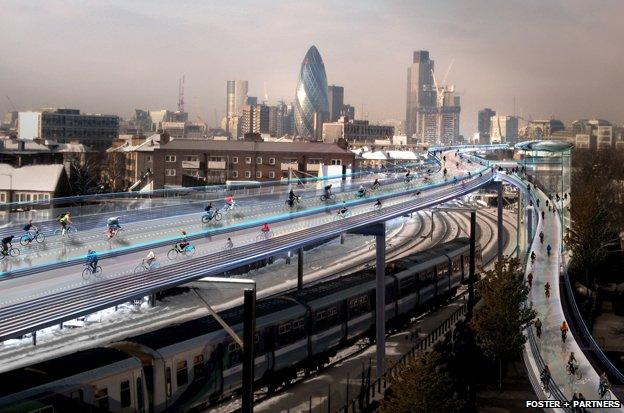
Cycling is booming in London. So much so that at busy times cyclists account for a quarter of all rush hour traffic in central London, external.
In certain places, such as Southwark Bridge and Theobald's Road, cyclists make up more than 60% of traffic at peak times. London's population is expected to grow by another million people in the next decade.
Sam Martin, director at Exterior Architects, says new space needs to be found for cyclists. His SkyCycle idea is for a network of elevated routes, external that would run over Network Rail train lines.
Bikes would remain on the roads but SkyCycle will bring in a new type of cyclist - people who want a direct route into work and those who feel unsafe cycling on busy London streets.
The highways would be 14m wide, accommodating three or four cyclists abreast in each direction. Lifts and ramps would get cyclists up to the cycleway.
The first route to be planned is a 6.5km artery from the Olympic Park at Stratford in East London to Liverpool Street in the City. It would be able to deliver up to 5,000 cyclists an hour in and out of central London and would cost about £200m to build, Martin predicts.
It sounds a lot but compared with Crossrail is cheap, he argues. The scheme would be operated by Transport for London with cyclists paying by Oyster swipe card, although charges would be lower than Tube fares. Other routes from north, south and west London would follow, he says.
"It's not for your local journey down to the corner shop. It's for people commuting to work or for families at weekends who want to visit the markets," he says,
Martin is working with architects Foster and Partners on the project and he says Mayor Boris Johnson is supportive, although no funds have been allocated.
"If we get political will behind it in the next few months, the first one could open in five to six years," Martin says.
But not everyone is convinced. Sustrans, the transport charity, says although an impressive "statement of intent", the scheme is likely to cost too much if it comes from existing cycling expenditure and it would be better to improve the safety of road junctions, for example by creating roundabouts that give cyclists priority over cars.
"You can do more by helping people at ground level," says Huw Davies, the charity's network director. "It's less sexy to sort out a traffic junction than to build something in the sky."
Cost: £200m for first 6.5km artery
Hull to Liverpool rail line (with Trans Pennine tunnel)
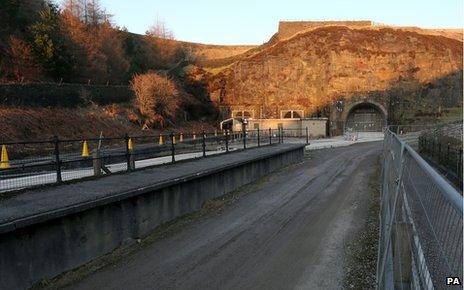
A Trans Pennine railway tunnel ran from Derbyshire to South Yorkshire until 1981
To go from Hull to Liverpool takes up to three and a half hours and involves changing in Manchester or Sheffield, yet it is only 110 miles.
Travelling from London to Derby, at about the same distance, takes half that time and there is no need to change.
If the north of England's economy is to be boosted - one of the aims of the HS2 high-speed rail link - then there should be a new route from Hull to Liverpool, says rail expert Christian Wolmar. "That would be far more transformative than a high speed link with London which might just suck firms away from the north." he explains.
The line should provide better services between Manchester and Leeds. The cities lie only about 40 miles apart but the service is notoriously slow - between 54 minutes and one hour, 36 minutes despite being direct.
Wolmar would like to see fast trains between the two cities every 10 minutes. There are plans to electrify the line already but not to speed it up, he says. Crucial to making the Leeds-Manchester line faster would be new tunnels through the Pennines capable of taking fast trains.
Cost: £1bn-plus
Severn Barrage

With the second highest tidal range on the planet - 14m at spring tides - the Severn estuary has huge potential for renewable energy. The idea of a dam across the estuary has been in circulation for 170 years. In its modern incarnation, the scheme would generate about 5% of the UK's electricity, supporters claim. That is equivalent to two or three nuclear power stations.
There are a variety of proposals on the table. Schemes include a 10-mile barrage between Cardiff and Weston-super-Mare. The barrage would be made from concrete casements that would be towed into the estuary and filled with sand. At high tide sluice gates would trap water. At low tide they would be opened, with the resultant surge powering turbines and providing electricity.
But environmentalists say this would damage wading bird populations. Some favour smaller projects, such as tidal lagoons. Lagoon supporters argue that unlike barrages they can generate power on incoming as well as outgoing tides. And they are cheaper to build because they are situated in shallow water. But they are an unproven technology.
Gordon Brown's government seriously considered the scheme but now it looks less likely. In 2010, then Environment Secretary Chris Huhne said there was no strategic case for the scheme. Nuclear power would be cheaper, he argued.
Cost: £15bn-£30bn
Lower Thames Crossing
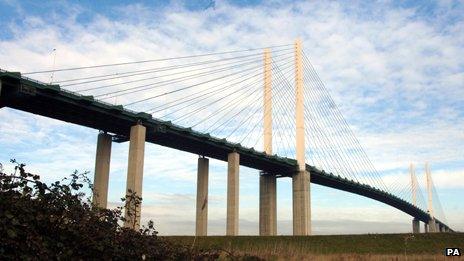
The Dartford Crossing is one of the current ways to cross the Thames
The Dartford bridge and tunnel are a staple of traffic news bulletins in the capital. Tailbacks are common. London is expanding east and more housing is being developed in the Thames Gateway. Unless another bridge is added soon, the congestion will bring this area east of London to a standstill, says James Hookham, managing director of the Freight Transport Association.
The government is consulting on a new bridge or tunnel over the Lower Thames, external. There are three locations but no guarantee that any of them will get the green light.
Two proposals suggest new bridges or tunnels should be built close to the existing crossing. But, Hookham prefers the more expensive but radical option C.
Traffic would cross the Thames further downstream, east of Tilbury. It would keep traffic further away from London. Motorists would cross the Thames without needing to get snarled up in Dartford, he argues. Traffic from the Channel ports would come off the M2 via a new motorway, cross the new bridge and loop north-west to the M25.
The scheme could be funded partly with tolls. "We need to think big," Hookham says. "These are key routes from Dover and Folkestone to the east of London." But he wonders if the government will ever press ahead. "The last time the government did this form of consultation was for the tunnel at Stonehenge. It decided to do nothing."
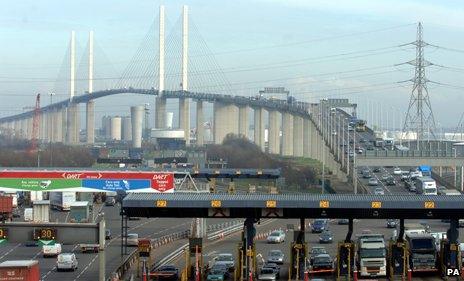
Congestion at the Dartford Crossing is partly because of toll barriers
Cost: £1bn-£3bn depending on route and whether bridge or tunnel